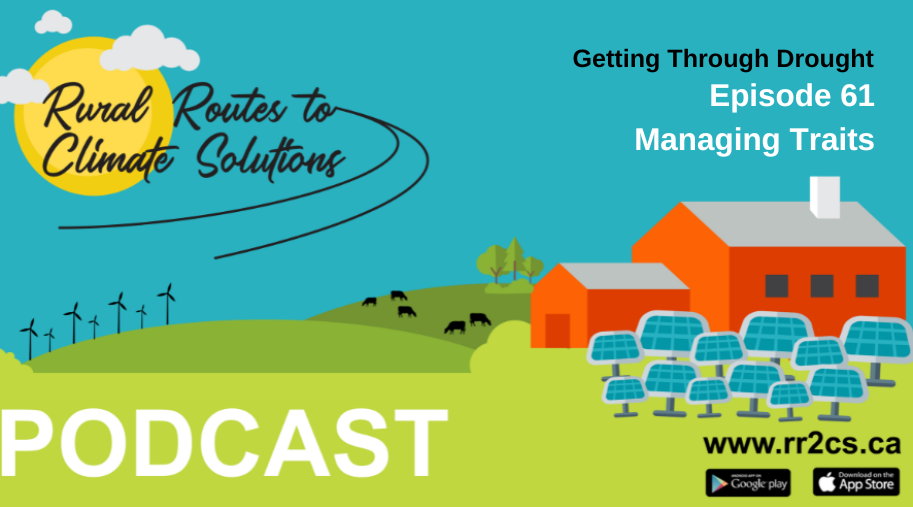Podcast: Play in new window | Download
Subscribe: RSS
Have you ever given any thought to what the perfect cow would be for the conditions we experience in Alberta? Between the punishing winter temperatures, frequent droughts and the occasional flood, perhaps the ideal cow would be a cross between a wooly mammoth and a camel with gills.
All jokes aside, we know how stressful a drought can be for a producer. In this episode, we’re joined by Dr. Susan Marcus of Lakeland College to talk about selecting and managing cattle traits so that your operation can be profitable during a good year while also getting you through a dry year.
Highlights:
- 3:29 – Dr. Marcus shares her background and what research she’s currently leading.
- 7:17 – What roles do breed and genetics have in a cow-calf producer’s drought plan?
- 9:48 – Dr. Marcus explains why fertility is becoming more influenced by the management environment rather than genetics.
- 11:14 – Why is it important to pay close attention to breeds and genetics when planning for a drought?
- 16:48 – Which benchmarks and traits indicate a cow will likely stay healthy and productive during a drought?
- 19:46 – Are there cattle behaviors that can tell a producer if a cow is more drought-resilient than others?
- 23:07 – Dr. Marcus shares tips on how to determine which cows should be culled.
- 26:09 – What is epigenetics and what role does it play when planning for a drought?
- 29:14 – Dr. Marcus shares her final words of advice.
Useful Links:
Want to learn more?
This is the first episode we’ve produced on trait selection in cattle, so we don’t really have any other episodes for you to listen to on the same topic yet. But if you’re a fan of ruminants, you should listen to our very first episode, Cows and Climate Change, or Episode 49 – Bringing Back Iinnii, which is the Blackfoot word for bison.
Our Farmers Blog is also a great source for stories of producers in Alberta who are going the extra mile with their management practices for the land, food and their communities.


